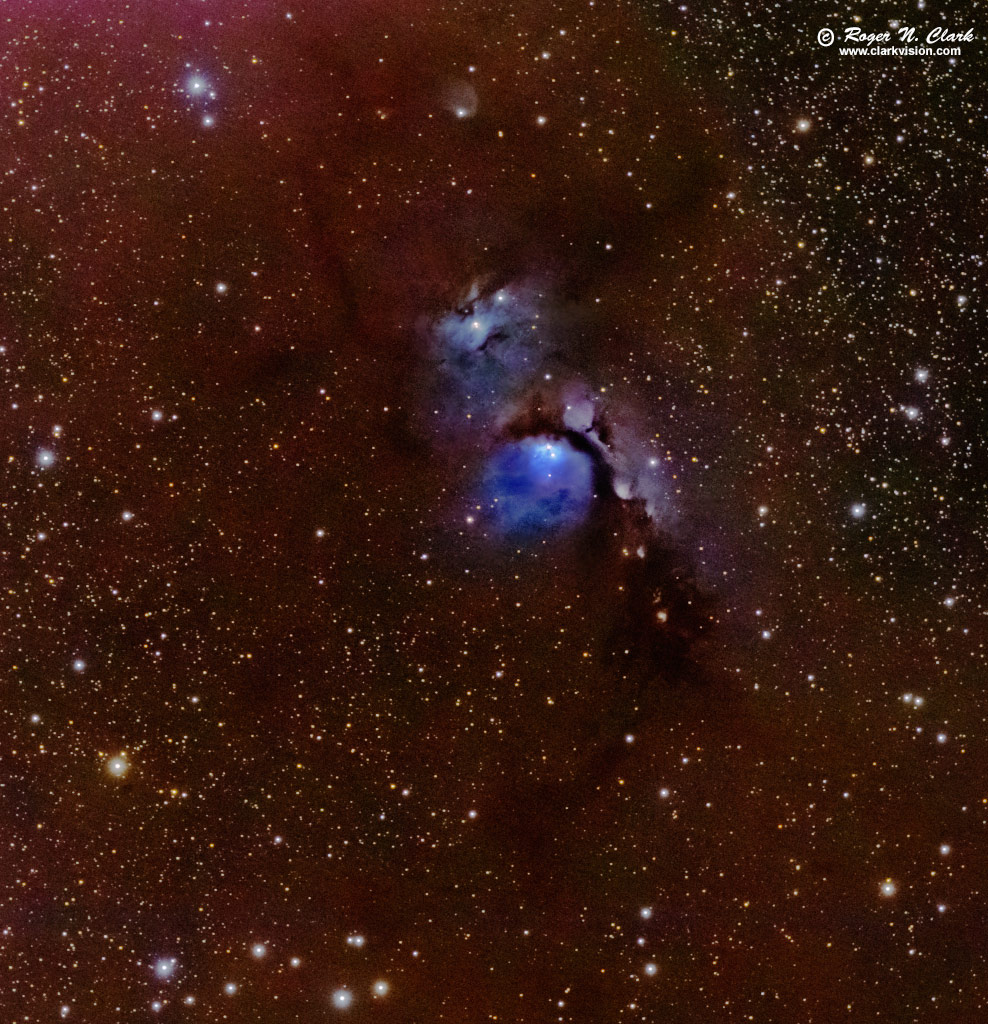| Home | Galleries | Articles | Reviews | Best Gear | New | About | Contact | Gallery Index | Previous |
Next |

| Home | Galleries | Articles | Reviews | Best Gear | New | About | Contact | Gallery Index | Previous |
Next |

Messier 78, M78, is a blue reflection nebula in the constellation of Orion. It is part of the Orion molecular cloud complex and is about 1600 light years away. The nebula is blue from light from nearby stars scattering off of dust particles that are much smaller that the wavelength of visible light (Rayleigh scattering). Some of the dust is so thick, it is opaque, creating dark lanes. The orange background is also due to dust absorbing blue wavelengths.
Technical. Canon 7D Mark II 20-megapixel digital camera and 300 mm f/2.8 L IS II at f/3.2. Twenty nine 60-second exposures at ISO 1600 were added (29 minutes total exposure). No dark frame subtraction, no flat fields. Tracking with an astrotrac and no guiding. These are very faint nebulae, so this image demonstrates that the standard 7D Mark II is an amazing low light camera for it to record so much detail in this exposure. Full size image is at 2.8 arc-seconds per pixel, and the image here is 1/2 that (5.6 arc-seconds per pixel). This image reached as faint (surface brightness 25 magnitudes / square arc-second) as the Horsehead nebula recently imaged yet has less than one half the exposure time. The reason is the M78 image was made from a darker site when airglow was lower. The faintest nebulae in the scene received less than 1 photon per pixel per exposure, about 26 photons total, a signal-to-noise ratio of about 2 in the final image above camera noise. That is extremely faint and an amazing achievement for a DSLR.
The Exposure Factors, CEF, CEFA are measures of the relative amounts of light received from a subject. It can be used to fairly compare wildly different lens/telescope apertures and exposure times. For this image:
Modern DSLRs like the 7D Mark II include on sensor dark current suppression and low fixed pattern noise at ISOs around 1600 and higher, making no need for dark frame subtraction. Modern raw converters correct for light fall-off and also correct for hot/dead/stuck pixels. This makes processing low light images easy: simply align and average. See my series on Astrophotography Image Processing for more details.
To learn how to obtain stunning images like this, please visit my Extensive Articles on Photography .
See my review of the Canon 7D Mark II and why it is so good for astrophotography: Canon 7D Mark II sensor analysis.
Keywords to this image = astrophoto-1 nebula Messier low-light digital_astro canon_7d2
Image ID: m78_c01.22.2015.0J6A3396-424_e-bin2x2-c1sw.jpg
| Home | Galleries | Articles | Reviews | Best Gear | Science | New | About | Contact |
Last updated November 03, 2025